Collected Works of Zane Grey Read online
Collected Works of
ZANE GREY
(1872-1939)
Contents
Historical Novels
Betty Zane
Spirit of the Border
The Westerns
The Last of the Plainsmen
The Last Trail
The Young Forester
The Heritage of the Desert
The Young Lion Hunter
Riders of the Purple Sage
Ken Ward in the Jungle
Desert Gold
The Light of Western Stars
The Rainbow Trail
The Lone Star Ranger
The Border Legion
Wildfire
The Up Trail
The Desert of Wheat
The Man of the Forest
The Trail Driver
To the Last Man
The Mysterious Rider
Wanderer of the Wasteland
Code of the West
Tappan’s Burro
The Call of the Canyon
Wild Horse Mesa
Captives of the Desert
The Vanishing American
The Thundering Herd
Under the Tonto Rim
Lost Pueblo
Forlorn River
Nevada
Avalanche
Fighting Caravans
The Shepherd of Guadaloupe
Raiders of Spanish Peaks
Sunset Pass
Arizona Ames
West of the Pecos
Wyoming
Robbers’ Roost
The Hash Knife Outfit
The Drift Fence
Thunder Mountain
Majesty’s Rancho
Knights of the Range
Twin Sombreros
Thirty Thousand on the Hoof
The Wilderness Trek
Valley of Wild Horses
Maverick Queen
The Baseball Stories
The Shortstop
The Young Pitcher
The Redheaded Outfield and Other Baseball Stories
Adventure Novels
Tales of Lonely Trails
Roping Lions in the Grand Canyon
The Social Novel
The Day of the Beast
The Non-Fiction
Tales of Fishes
Tales of the Angler’s Eldorado, New Zealand
An American Angler in Australia
The Delphi Classics Catalogue
© Delphi Classics 2014
Version 2
Browse our Main Series
Browse our Ancient Classics
Browse our Poets
Browse our Art eBooks
Browse our Classical Music series
Collected Works of
ZANE GREY
By Delphi Classics, 2014
COPYRIGHT
Collected Works of Zane Grey
First published in the United Kingdom in 2014 by Delphi Classics.
© Delphi Classics, 2014.
All rights reserved. No part of this publication may be reproduced, stored in a retrieval system, or transmitted, in any form or by any means, without the prior permission in writing of the publisher, nor be otherwise circulated in any form other than that in which it is published.
ISBN: 9781910630242
Delphi Classics
is an imprint of
Delphi Publishing Ltd
Hastings, East Sussex
United Kingdom
Contact: [email protected]
www.delphiclassics.com
Parts Edition Now Available!
Love reading Zane Grey?
Did you know you can now purchase the Delphi Classics Parts Edition of this author and enjoy all the novels, plays, non-fiction books and other works as individual eBooks? Now, you can select and read individual novels etc. and know precisely where you are in an eBook. You will also be able to manage space better on your eReading devices.
The Parts Edition is only available direct from the Delphi Classics website.
For more information about this exciting new format and to try free Parts Edition downloads, please visit this link.
Explore American Masters with Delphi Classics
For the first time in digital publishing history, Delphi Classics is proud to present the complete works of these American authors.
www.delphiclassics.com
Historical Novels
Grey’s birthplace in Zanesville, Ohio
Betty Zane
After graduating in dentistry in 1896, Grey established his practice in New York City under the name of Dr. Zane Grey. It was a competitive area, but he wanted to be close to publishers. He began to write in the evening to offset the tedium of his dental practice, but during this period he struggled financially and emotionally. Though Grey was a natural writer, his early efforts were rigid in style and grammatically weak. In writing, nevertheless, he found temporary escape from the harshness of his life and his troubles.
Grey often went camping with his brother R.C. in Lackawaxen, Pennsylvania, where they fished in the upper Delaware River. When canoeing in 1900, Grey met seventeen year-old Lina Roth, who was known by the nickname "Dolly". She came from a family of physicians and was studying at the time to be a schoolteacher. After a passionate courtship, marked by frequent quarrels, Grey and Dolly married five years later in 1905 and Dolly gave up her teaching career. They moved to a farmhouse at the convergence of the Delaware and Lackawaxen rivers, in Lackawaxen, Pennsylvania, where Grey's mother and sister joined them. Grey decided to end his dental practice to devote full-time to his promising literary pursuits, as Dolly’s inheritance provided short-term financial support.
While Dolly managed Grey's career and raised their three children, over the next two decades Grey often spent months away from the family. He fished, wrote and spent time with his many mistresses. Though Dolly knew of his behaviour, she seemed to view his actions as a weakness in his character, rather than a choice he could make. Throughout their life together, he highly valued her management of his writing career and their family, and her solid emotional support. With the help of Dolly's proofreading and copy editing, Grey gradually improved his writing. His first magazine article, "A Day on the Delaware", a human-interest story about a Grey brothers’ fishing expedition, was published in the May 1902 issue of Recreation magazine. Delighted by selling the article, Grey offered reprints to patients in his waiting room.
After reading Owen Wister’s great Western novel The Virginian, Grey studied its style and structure in depth, feeling inspired to write a full-length novel. He experienced difficulties in writing Betty Zane, his first novel, and in 1903, when it was rejected by Harper & Brothers, he lapsed into despair. Grey decided to self-publish the novel, aided with funds either provided by his wife or his brother R. C.’s wealthy girlfriend, Reba Smith. From the beginning of his literary career, vivid descriptive writing was to going to be the strongest aspect of his writing.
The novel dramatises the heroism of the author’s ancestor, the eponymous Betty Zane, who had saved Fort Henry. According to a historical marker in Wheeling, on September 11, 1782, the Zane family were under siege in Fort Henry by American Indian allies of the British. During the siege, while Betty was loading a Kentucky rifle, her father was wounded and fell from the top of the fort right before her. The captain of the fort exclaimed, "We have lost two men, one Mr. Zane and another gentlemen, and we need black gunpowder." Betty ran 40 to 50 yards to retrieve gunpowder from her house, where her brother had left it and returned safely. Due to her heroic actions, they held off the Native Americans and survived the siege.
A nineteenth century depiction of Elizabeth Zane's legendary feat of ret
rieving powder during the 1782 siege of Fort Henry
Fort Henry was located near the Ohio River, by modern day Wheeling, West Virginia.
CONTENTS
NOTE
PROLOGUE
CHAPTER I.
CHAPTER II.
CHAPTER III.
CHAPTER IV.
CHAPTER V.
CHAPTER VI.
CHAPTER VII.
CHAPTER VIII.
CHAPTER IX.
CHAPTER X.
CHAPTER XI.
CHAPTER XII.
CHAPTER XIII.
CHAPTER XIV.
CHAPTER XV.
AFTERWORD.
The first edition
Grey, shortly before publication
TO THE BETTY ZANE CHAPTER
OF THE DAUGHTERS OF THE REVOLUTION
THIS BOOK IS RESPECTFULLY DEDICATED
BY THE AUTHOR
NOTE
IN A QUIET corner of the stately little city of Wheeling, West Va., stands a monument on which is inscribed:
“By authority of the State of West Virginia to commemorate the siege of Fort Henry, Sept 11, 1782, the last battle of the American Revolution, this tablet is here placed.”
Had it not been for the heroism of a girl the foregoing inscription would never have been written, and the city of Wheeling would never have existed. From time to time I have read short stories and magazine articles which have been published about Elizabeth Zane and her famous exploit; but they are unreliable in some particulars, which is owing, no doubt, to the singularly meagre details available in histories of our western border.
For a hundred years the stories of Betty and Isaac Zane have been familiar, oft-repeated tales in my family — tales told with that pardonable ancestral pride which seems inherent in every one. My grandmother loved to cluster the children round her and tell them that when she was a little girl she had knelt at the feet of Betty Zane, and listened to the old lady as she told of her brother’s capture by the Indian Princess, of the burning of the Fort, and of her own race for life. I knew these stories by heart when a child.
Two years ago my mother came to me with an old note book which had been discovered in some rubbish that had been placed in the yard to burn. The book had probably been hidden in an old picture frame for many years. It belonged to my great-grandfather, Col. Ebenezer Zane. From its faded and time-worn pages I have taken the main facts of my story. My regret is that a worthier pen than mine has not had this wealth of material.
In this busy progressive age there are no heroes of the kind so dear to all lovers of chivalry and romance. There are heroes, perhaps, but they are the patient sad-faced kind, of whom few take cognizance as they hurry onward. But cannot we all remember some one who suffered greatly, who accomplished great deeds, who died on the battlefield — some one around whose name lingers a halo of glory? Few of us are so unfortunate that we cannot look backward on kith or kin and thrill with love and reverence as we dream of an act of heroism or martyrdom which rings down the annals of time like the melody of the huntsman’s horn, as it peals out on a frosty October morn purer and sweeter with each succeeding note.
If to any of those who have such remembrances, as well as those who have not, my story gives an hour of pleasure I shall be rewarded.
PROLOGUE
ON JUNE 16, 1716, Alexander Spotswood, Governor of the Colony of Virginia, and a gallant soldier who had served under Marlborough in the English wars, rode, at the head of a dauntless band of cavaliers, down the quiet street of quaint old Williamsburg.
The adventurous spirits of this party of men urged them toward the land of the setting sun, that unknown west far beyond the blue crested mountains rising so grandly before them.
Months afterward they stood on the western range of the Great North mountains towering above the picturesque Shenandoah Valley, and from the summit of one of the loftiest peaks, where, until then, the foot of a white man had never trod, they viewed the vast expanse of plain and forest with glistening eyes. Returning to Williamsburg they told of the wonderful richness of the newly discovered country and thus opened the way for the venturesome pioneer who was destined to overcome all difficulties and make a home in the western world.
But fifty years and more passed before a white man penetrated far beyond the purple spires of those majestic mountains.
One bright morning in June, 1769, the figure of a stalwart, broad shouldered man could have been seen standing on the wild and rugged promontory which rears its rocky bluff high above the Ohio river, at a point near the mouth of Wheeling Creek. He was alone save for the companionship of a deerhound that crouched at his feet. As he leaned on a long rifle, contemplating the glorious scene that stretched before him, a smile flashed across his bronzed cheek, and his heart bounded as he forecast the future of that spot. In the river below him lay an island so round and green that it resembled a huge lily pad floating placidly on the water. The fresh green foliage of the trees sparkled with glittering dewdrops. Back of him rose the high ridges, and, in front, as far as eye could reach, extended an unbroken forest.
Beneath him to the left and across a deep ravine he saw a wide level clearing. The few scattered and blackened tree stumps showed the ravages made by a forest fire in the years gone by. The field was now overgrown with hazel and laurel bushes, and intermingling with them were the trailing arbutus, the honeysuckle, and the wild rose. A fragrant perfume was wafted upward to him. A rushing creek bordered one edge of the clearing. After a long quiet reach of water, which could be seen winding back in the hills, the stream tumbled madly over a rocky ledge, and white with foam, it hurried onward as if impatient of long restraint, and lost its individuality in the broad Ohio.
This solitary hunter was Colonel Ebenezer Zane. He was one of those daring men, who, as the tide of emigration started westward, had left his friends and family and had struck out alone into the wilderness. Departing from his home in Eastern Virginia he had plunged into the woods, and after many days of hunting and exploring, he reached the then far Western Ohio valley.
The scene so impressed Colonel Zane that he concluded to found a settlement there. Taking “tomahawk possession” of the locality (which consisted of blazing a few trees with his tomahawk), he built himself a rude shack and remained that summer on the Ohio.
In the autumn he set out for Berkeley County, Virginia, to tell his people of the magnificent country he had discovered. The following spring he persuaded a number of settlers, of a like spirit with himself, to accompany him to the wilderness. Believing it unsafe to take their families with them at once, they left them at Red Stone on the Monongahela river, while the men, including Colonel Zane, his brothers Silas, Andrew, Jonathan and Isaac, the Wetzels, McCollochs, Bennets, Metzars and others, pushed on ahead.
The country through which they passed was one tangled, most impenetrable forest; the axe of the pioneer had never sounded in this region, where every rod of the way might harbor some unknown danger.
These reckless bordermen knew not the meaning of fear; to all, daring adventure was welcome, and the screech of a redskin and the ping of a bullet were familiar sounds; to the Wetzels, McCollochs and Jonathan Zane the hunting of Indians was the most thrilling passion of their lives; indeed, the Wetzels, particularly, knew no other occupation. They had attained a wonderful skill with the rifle; long practice had rendered their senses as acute as those of the fox. Skilled in every variety of woodcraft, with lynx eyes ever on the alert for detecting a trail, or the curling smoke of some camp fire, or the minutest sign of an enemy, these men stole onward through the forest with the cautious but dogged and persistent determination that was characteristic of the settler.
They at length climbed the commanding bluff overlooking the majestic river, and as they gazed out on the undulating and uninterrupted area of green, their hearts beat high with hope.
The keen axe, wielded by strong arms, soon opened the clearing and reared stout log cabins on the river bluff. Then Ebenezer Zane a
nd his followers moved their families and soon the settlement began to grow and flourish. As the little village commenced to prosper the redmen became troublesome. Settlers were shot while plowing the fields or gathering the harvests. Bands of hostile Indians prowled around and made it dangerous for anyone to leave the clearing. Frequently the first person to appear in the early morning would be shot at by an Indian concealed in the woods.
General George Rodgers Clark, commandant of the Western Military Department, arrived at the village in 1774. As an attack from the savages was apprehended during the year the settlers determined to erect a fort as a defense for the infant settlement. It was planned by General Clark and built by the people themselves. At first they called it Fort Fincastle, in honor of Lord Dunmore, who, at the time of its erection, was Governor of the Colony of Virginia. In 1776 its name was changed to Fort Henry, in honor of Patrick Henry.
For many years it remained the most famous fort on the frontier, having withstood numberless Indian attacks and two memorable sieges, one in 1777, which year is called the year of the “Bloody Sevens,” and again in 1782. In this last siege the British Rangers under Hamilton took part with the Indians, making the attack practically the last battle of the Revolution.
CHAPTER I.
THE ZANE FAMILY was a remarkable one in early days, and most of its members are historical characters.
The first Zane of whom any trace can be found was a Dane of aristocratic lineage, who was exiled from his country and came to America with William Penn. He was prominent for several years in the new settlement founded by Penn, and Zane street, Philadelphia, bears his name. Being a proud and arrogant man, he soon became obnoxious to his Quaker brethren. He therefore cut loose from them and emigrated to Virginia, settling on the Potomac river, in what was then known as Berkeley county. There his five sons, and one daughter, the heroine of this story, were born.

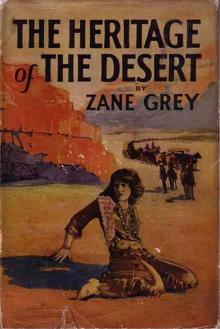 The Heritage of the Desert: A Novel
The Heritage of the Desert: A Novel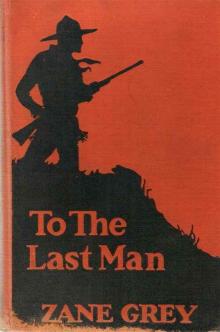 To the Last Man
To the Last Man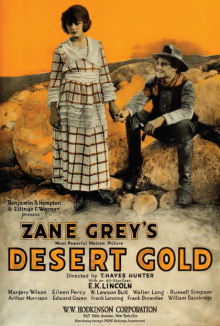 Desert Gold
Desert Gold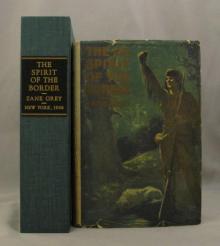 The Spirit of the Border: A Romance of the Early Settlers in the Ohio Valley
The Spirit of the Border: A Romance of the Early Settlers in the Ohio Valley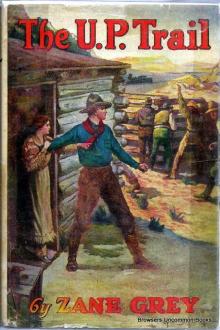 The U. P. Trail
The U. P. Trail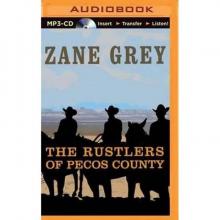 The Rustlers of Pecos County
The Rustlers of Pecos County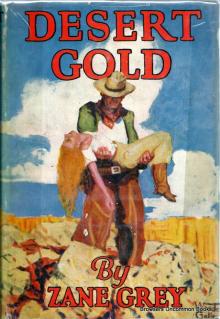 The Border Legion
The Border Legion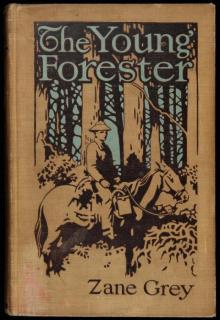 The Young Forester
The Young Forester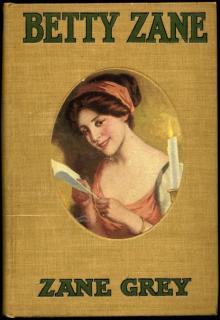 Betty Zane
Betty Zane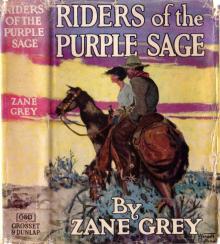 Riders of the Purple Sage
Riders of the Purple Sage The Second Zane Grey MEGAPACK®
The Second Zane Grey MEGAPACK®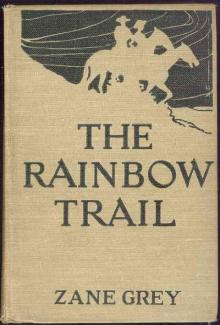 The Rainbow Trail
The Rainbow Trail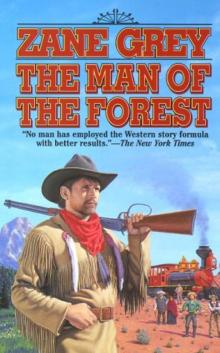 The Man of the Forest
The Man of the Forest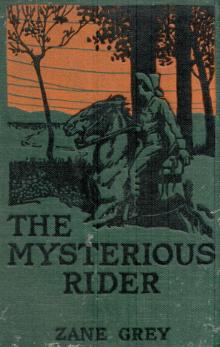 The Mysterious Rider
The Mysterious Rider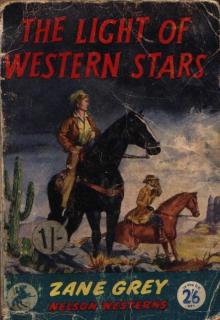 The Light of the Western Stars
The Light of the Western Stars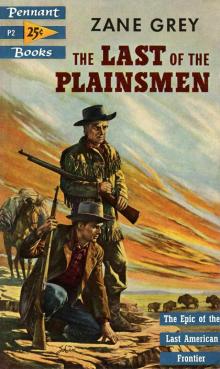 The Last of the Plainsmen
The Last of the Plainsmen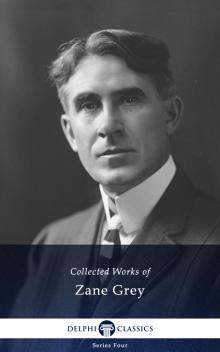 Collected Works of Zane Grey
Collected Works of Zane Grey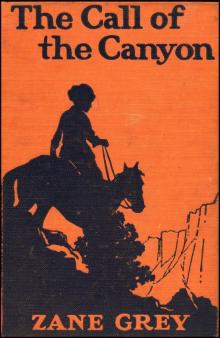 The Call of the Canyon
The Call of the Canyon Twin Sombreros
Twin Sombreros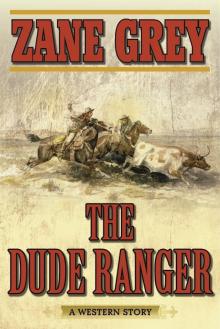 The Dude Ranger
The Dude Ranger The Water Hole
The Water Hole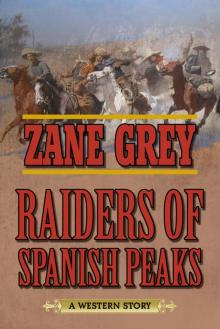 Raiders of Spanish Peaks
Raiders of Spanish Peaks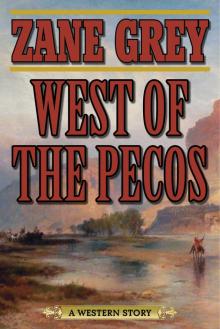 West of the Pecos
West of the Pecos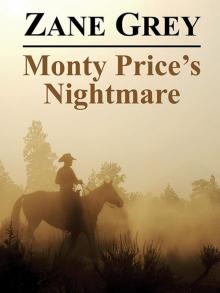 Monty Price's Nightmare
Monty Price's Nightmare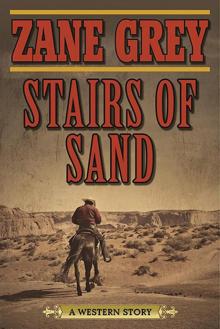 Stairs of Sand
Stairs of Sand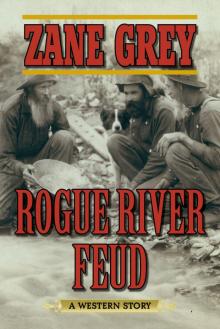 Rogue River Feud
Rogue River Feud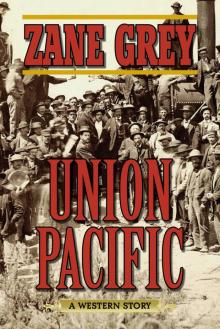 Union Pacific
Union Pacific The Western Romance MEGAPACK ®: 20 Classic Tales
The Western Romance MEGAPACK ®: 20 Classic Tales The Lone Star Ranger
The Lone Star Ranger The Zane Grey Megapack
The Zane Grey Megapack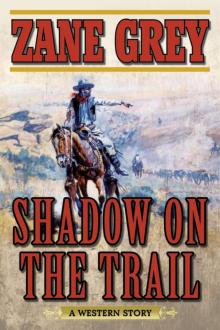 Shadow on the Trail
Shadow on the Trail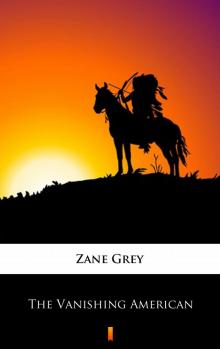 The Vanishing American
The Vanishing American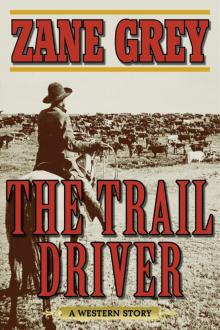 The Trail Driver
The Trail Driver War Comes to the Big Bend
War Comes to the Big Bend The Westerners
The Westerners Silvermane
Silvermane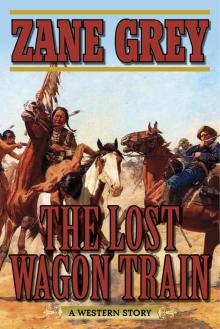 The Lost Wagon Train
The Lost Wagon Train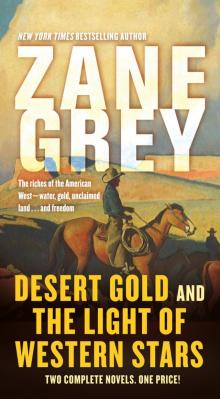 Desert Gold and the Light of Western Stars
Desert Gold and the Light of Western Stars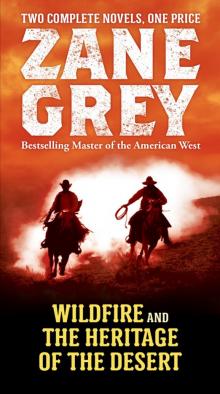 Wildfire and the Heritage of the Desert
Wildfire and the Heritage of the Desert The Great Trek
The Great Trek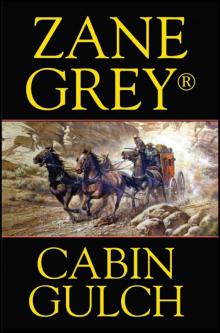 Cabin Gulch
Cabin Gulch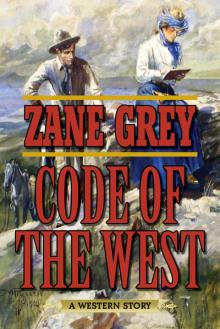 Code of the West
Code of the West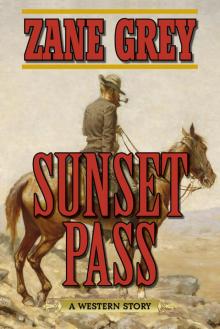 Sunset Pass
Sunset Pass Panguitch
Panguitch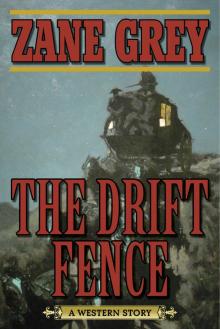 The Drift Fence
The Drift Fence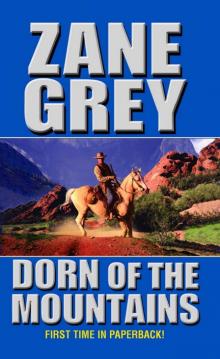 Dorn Of The Mountains
Dorn Of The Mountains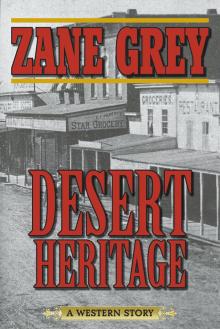 Desert Heritage
Desert Heritage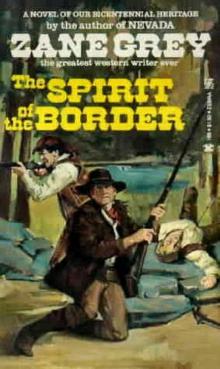 The Spirit Of The Border
The Spirit Of The Border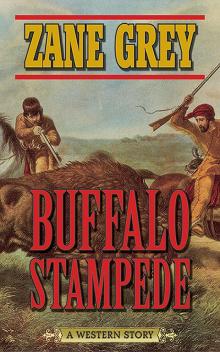 Buffalo Stampede
Buffalo Stampede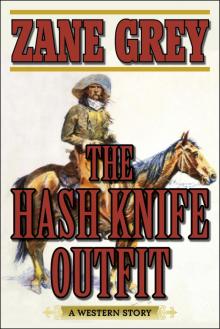 The Hash Knife Outfit
The Hash Knife Outfit The Lone Star Ranger and the Mysterious Rider
The Lone Star Ranger and the Mysterious Rider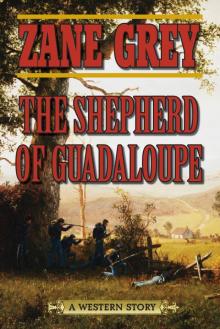 The Shepherd of Guadaloupe
The Shepherd of Guadaloupe Riders of the Purple Sage (Leisure Historical Fiction)
Riders of the Purple Sage (Leisure Historical Fiction)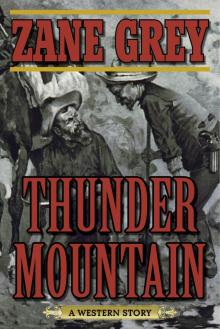 Thunder Mountain
Thunder Mountain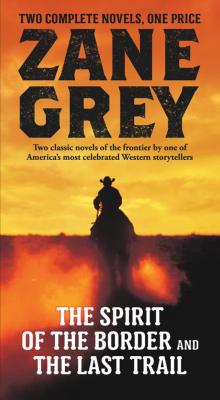 The Spirit of the Border and the Last Trail
The Spirit of the Border and the Last Trail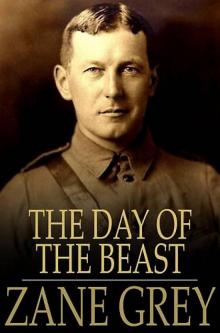 The Day of the Beast
The Day of the Beast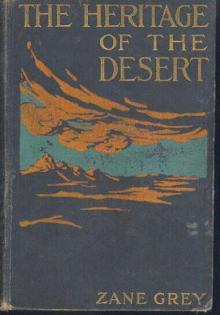 The Heritage of the Desert
The Heritage of the Desert The Deer Stalker
The Deer Stalker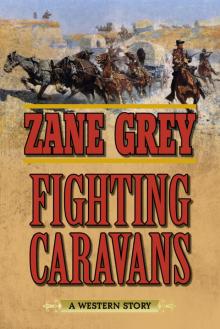 Fighting Caravans
Fighting Caravans